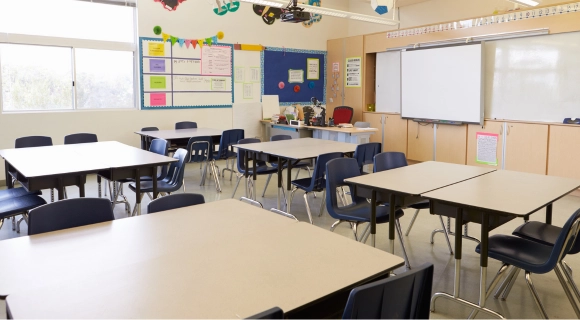Challenge
The HVAC units fail to respond to commands or reach setpoints, resulting in discomfort caused by low temperatures and high humidity levels.
The public school recently retrofitted the HVAC and control systems. However, for months, they have been unable to control indoor temperatures, resulting in complaints from some students and teachers due to low temperatures. Management also observed a significant increase in the school’s power bill.
Despite repeated interventions from HVAC contractors and control vendors, the issues persist even after the warranty on the retrofit project expired. Seeking resolution, the school management has reached out to our team for assistance in identifying the root causes of these problems and devising a plan to address them effectively.

Scope of Work
Complete audit of the public school’s building automation and HVAC control system. Look for indicators that may be the root cause of the underlying problems. Uncover malfunctioning and incomplete sequences of operations. Identify critical and poorly commissioned components. Address inefficient equipment that contributes to energy waste, negatively impacting the school’s power bill.
HVAC systems subject to audit:
- Eighty-three Single Duct Pressure Independent VAV Boxes with Electric Reheat Coil.
- Fourteen Multizone Air Handling Units with Chilled Water Coil.
- One Single Zone Variable Air Volume Unit with Chilled Water Coil.
- One Constant Water Flow Chiller Plant Comprising:
- Two Air Cooled Chillers
- Two Chilled Water Pumps
Audit Summary
Total Equipment Audited
Incomplete Sequences Detected
Equipment Deterioration Factors
Energy Waste Sources Identified
Fault Detection Possibilities
Non-Commissioned Components
The audit reveals numerous unresolved HVAC control problems, with many sequences of operations found to be incomplete. It is evident that the project lacked proper commissioning, leading to the persistent issues. Notably, the absence of commissioning for the variable frequency drives (VFDs) is resulting in substantial wasted power consumption, likely costing the school hundreds of dollars.
However, there is good news: a comprehensive recommissioning and completion of sequence operations can address these issues. We estimate that such measures could reduce HVAC power consumption by 40% to 60%, significantly alleviating the current waste.
Critical Items
- Simultaneous 24/7 operation of both Air-Cooled Chillers and Chilled Water Pumps, leading to significant energy wastage.
- Continuous 24/7 operation of twelve Air Handling Units, contributing to energy waste.
- Malfunctioning and incomplete sequences of operations across most units, indicating a widespread lack of commissioning.
- Need for recommissioning of AHUs control valves and VFDs to ensure proper control of discharge air temperature (DAT) and duct static pressure (DSP), respectively.
- Many other components require commissioning, including CO2 sensors, control dampers, and blower status indicators.
- Discrepancies between AHUs and VAVs occupancy statuses, indicating operational synchrony issues.
- Fixed operational points leading to poor performance and efficiency.
- Lack of humidity control mechanisms, with no sensors monitoring space humidity in VAVs or AHUs.
- Need for zero calibration of VAV boxes, recommissioning of heaters, and improvement of operation bands for optimal performance.
- Offline status of many VAV boxes, indicating a lack of monitoring and control by the Building Management System (BMS).
- The Building Management System (BMS) front-end user interface (UI) needs improvement; many units are displaying the wrong information. Trends, fault detection panels, and operational setpoints and bands are missing.
Recommendations
- Addressing all identified energy waste sources to achieve a 40% to 60% reduction in HVAC power consumption.
- Recommissioning all units and critical components to ensure proper operation.
- Completing, testing, and optimizing all unit sequences of operations for improved performance and efficiency.
- Troubleshooting and integrating all offline devices into the building automation network.
- Conducting an indoor air quality (IAQ) test and implementing humidity control mechanisms for enhanced comfort.
- Incorporating fault detection mechanisms to anticipate potential failures.
- Updating the BMS UI for improved visibility and operator control.
- Using a qualified commissioning agent to oversee the implementation of these recommendations.




